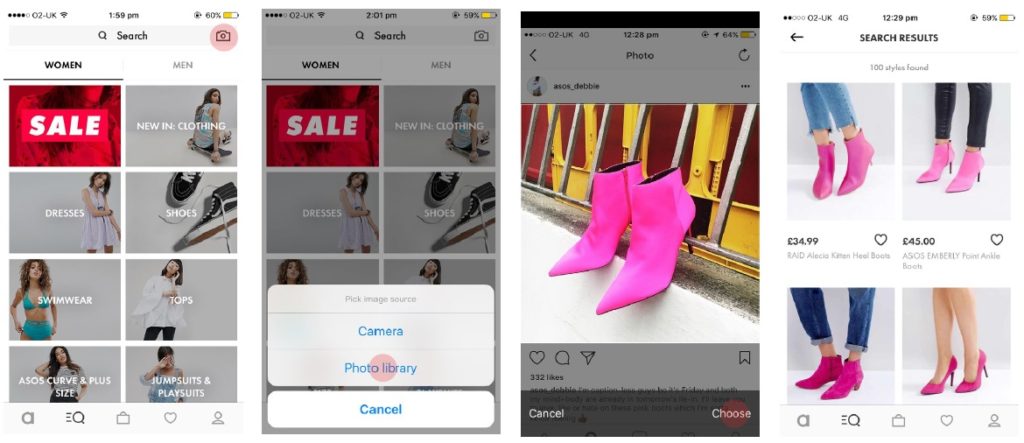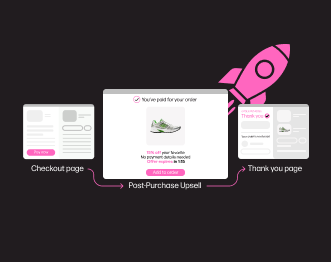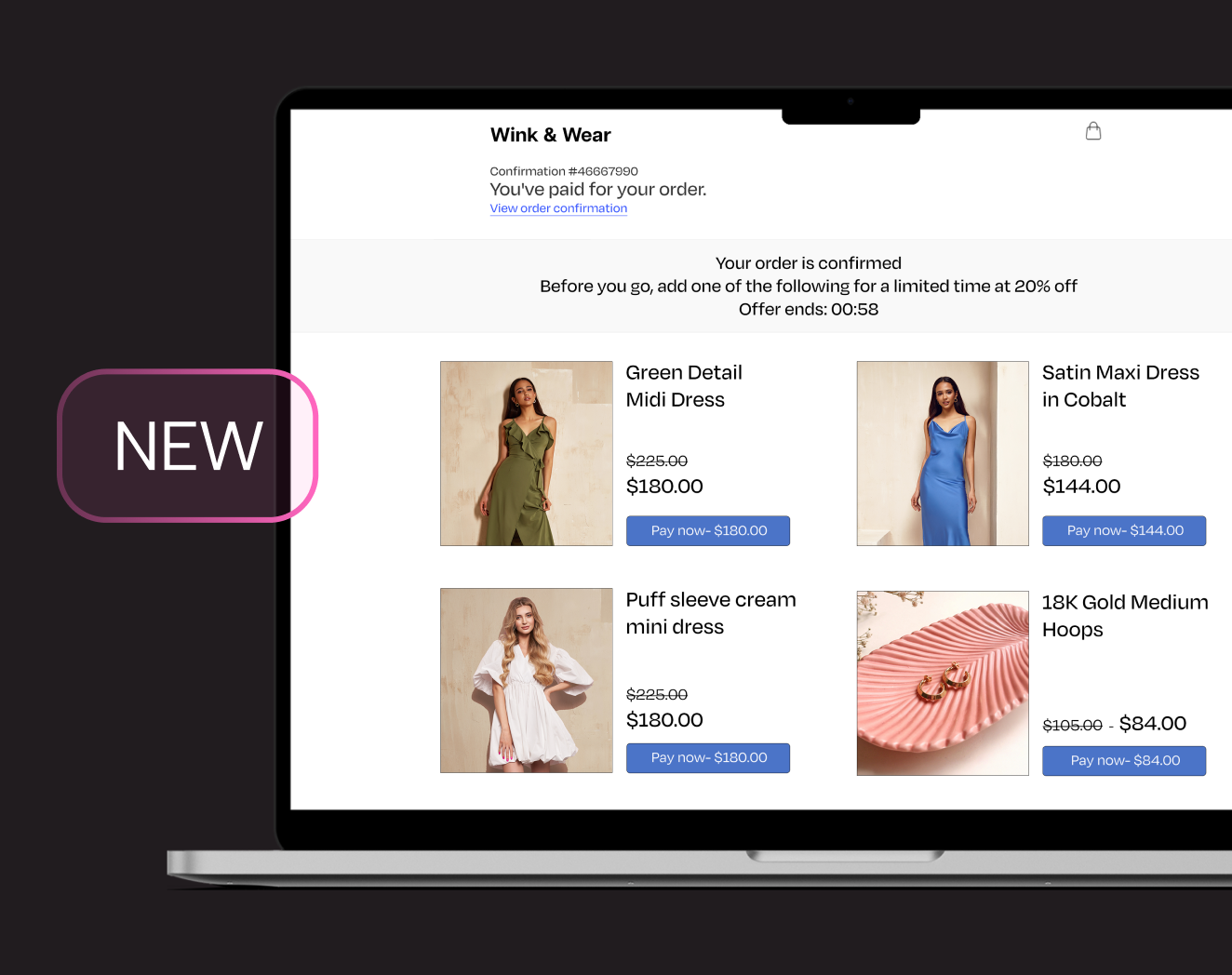Visual Search in Ecommerce: How Retailers Use Real-world Imagery to Win More Customers
In this article, we break down the basics and evolution of visual search in ecommerce and how this technology is leveraged by commerce brands today.
What is visual search in ecommerce?
With the development of the internet came a shift in the way customers research products. In the past (and by “past”, we mean “only a few years ago”), online shoppers could only browse for products with text-based site searches. Ecommerce site search statistics and trends show that search sits at the epicenter of a customer’s onsite journey and is vital to creating a convenient shopping experience (and a faster track to checkout).
Then came the introduction of visual search.
Visual search is exactly what the name implies: customers search for products using images. When an image gets uploaded onto the search bar, the search engine will try to find the best products to match the image and also provide additional suggestions. These suggestions can include products from the same line, similar products or brands, etc.
So, how did visual search become so popular?
It’s simple – because it’s way faster than traditional site search, and it brings in excellent search results.
With visual search, all an online shopper needs to do is take a picture of the product they are interested in and upload it to the internet. There is no need to figure out the best keyword for it, the exact phrase or the best description so that search results are satisfactory. You can literally find the right match within seconds.
If a customer loves a certain product, and wants to check where it is available and what the price is – they just snap a photo and run it through a search engine. This is incredibly popular among younger generations, the so-called “Generation Z”. These young people literally grew up with smartphones in their hands and, above all else, they value speed. If it’s not fast enough, it cannot keep their interest, which is a big problem for online shopping.
Online stores have to fight for every second of internet attention, because every second lost risks a customer lost forever. As it is now, there is still time to adjust to the new circumstances; however, that time is running out, and online stores will have to adapt soon – or risk losing their customers for good.
And not just their current customers, but also potential ones. By 2023, it is expected that the Global Visual Search Market will be more than $14,727m, and it will continue to grow from there.
Unless brands adapt to this trend, and incorporate visual search into their strategies, it will be increasingly difficult to survive in the market. Although a great number of online stores still doesn’t comprehend the scope of this change, there are those that use the leverage of visual search. By including the option for visual search, these companies have secured their place in the game, and also managed to increase their annual revenue by a large margin.
Examples of Ecommerce Visual Search
One of the first major websites that adopted the visual search option was Pinterest in 2015. Today, its users conduct around 600 million visual searches each month, with close to an 150% increase in searches every year. Based on this, Pinterest was able to become a go-to place for visual search, and numerous companies have followed suit. A good example would be Ikea, since the company made a smart move to integrate its catalogue the visual search option on Pinterest.
It was clear to all the major players that visual search was definitely not something to miss on. Another giant that quickly realized this was Amazon; the company introduced StylesSnap, a search app that helps facilitate online shopping. When a person uploads an image, the app automatically looks for the best match, making the choice really easy for the customer. Of course, this revolutionary move couldn’t go unnoticed from Google, and the company created its own variant of the visual search feature – Google Lens.
With all this going on, brands worldwide started to realize that optimization for visual search is a must, and there is no way to compete unless your product is easy to check out with the ease that visual search offers. A cool example of a brand making the best of visual search in fashion ecommerce is ASOS.
Visual search by ASOS on mobile
Not wanting to lose customers due to poor CX, ASOS decided to include the option for visual search and, therefore, facilitate browsing for its audience. The company’s app is called StyleMatch, and the name says it all. A customer only has to upload an image and StyleMatch will find the perfect match from ASOS’ catalog offer. A great thing is that the app can recognize way more than 800 brands and 80,000 products; this way, ASOS can retain a higher number of its potential customers, by matching their search with the perfect apparel.

Another cool element from the CX perspective is that, if a customer takes a photo of a product and uploads it, the image itself isn’t saved to their mobile gallery. When an app automatically does this, without prior consent from the user, it can be pretty frustrating and users can quickly decide to opt out. This is a perfect way to indirectly say to the customers that you respect them and that you don’t want to force anything onto them. The images taken are only used then and there for visual search.
How Visual Search Engines Impact Ecommerce Performance
It’s impossible to separate ecommerce performance from search engines; search results have direct consequences on CX and ecommerce revenue.
For example, when a visitor clicks on a product and decides to buy it, they will be more likely to buy another similar product that’s offered, or a product from the same line. This is why visual search apps are essential to customer retention and better sales.
Another key aspect is the combination of “offline” with the online when it comes to the shopping process. Visual search allows customers to check out literally anything they stumble upon by walking the streets, visiting a country, etc. They can use their immediate sentiment and move on to searching for a product to buy.
All in all, brands that are better optimized for visual search will remain ahead of competitors. This feature has become an integral part of the global commerce market and it will continue improving and developing over time.




